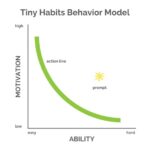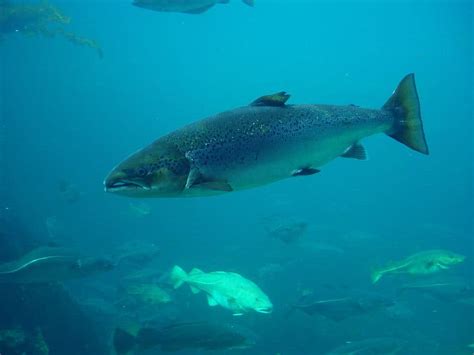
Hybridization between distinct species of canids, specifically coyotes and wolves, is producing highly adaptable “super species” that pose a significant threat to existing ecosystems and biodiversity, according to scientists. This interbreeding is creating animals with enhanced survival traits, leading to concerns about the genetic integrity of native wolf populations and the potential disruption of ecological balance.
The Rise of Hybrid Canids: A Looming Ecological Crisis
Scientists are increasingly alarmed by the proliferation of hybrid canids, particularly those resulting from the interbreeding of coyotes ( Canis latrans ) and various wolf species ( Canis lupus ). These hybrid animals, often referred to as “coywolves” or “eastern coyotes,” exhibit a combination of traits that make them exceptionally adaptable and capable of thriving in diverse environments, including urbanized areas. This heightened adaptability poses a significant threat to the genetic integrity of native wolf populations and the overall biodiversity of affected ecosystems.
The primary concern revolves around the potential for these hybrids to outcompete and displace native species. Their enhanced adaptability, a direct result of combining the genetic strengths of both parent species, allows them to exploit a wider range of food sources and habitats. This competitive advantage can lead to a decline in the populations of native wolves, which are already facing numerous challenges such as habitat loss and human encroachment. Furthermore, the introduction of coyote genes into the wolf gene pool can dilute the unique genetic characteristics that define distinct wolf subspecies, potentially leading to a loss of genetic diversity and reduced resilience to environmental changes.
One of the key factors driving this hybridization is the increasing fragmentation of natural habitats. As human development encroaches upon wilderness areas, it creates isolated pockets of habitat that can limit the ability of wolves to find suitable mates within their own species. This isolation can lead them to seek out mates from other canid species, such as coyotes, resulting in hybridization. The absence of strong social structures within fragmented wolf populations can also contribute to this phenomenon, as it reduces the likelihood of wolves adhering to traditional mating behaviors.
Another contributing factor is the historical persecution of wolves, which has drastically reduced their populations in many areas. This reduction in population size has not only decreased the availability of suitable mates but has also disrupted the social dynamics that typically prevent interbreeding with other canid species. In areas where wolf populations have been significantly reduced or extirpated, coyotes have been able to expand their range and fill the ecological void, increasing the opportunities for hybridization.
The ecological consequences of this widespread hybridization are far-reaching and complex. As hybrid canids become more prevalent, they can alter the structure and function of ecosystems in unpredictable ways. For example, their increased adaptability may allow them to exploit new food sources, leading to changes in predator-prey relationships and cascading effects throughout the food web. Furthermore, the introduction of novel genes into the wolf gene pool can disrupt the delicate balance of genetic adaptations that have evolved over thousands of years, potentially making wolf populations more vulnerable to diseases and environmental stressors.
The Genetic Threat: Dilution of the Wolf Gene Pool
The genetic implications of coyote-wolf hybridization are particularly concerning. Wolves and coyotes, while both belonging to the Canis genus, have distinct genetic makeups that reflect their different evolutionary histories and adaptations. When these species interbreed, the resulting offspring inherit a mix of genes from both parents. Over time, repeated hybridization can lead to the gradual dilution of the wolf gene pool, as wolf genes are replaced by coyote genes.
This genetic dilution can have several negative consequences for wolf populations. It can reduce the genetic diversity within wolf populations, making them more susceptible to diseases and environmental changes. It can also alter the physical and behavioral characteristics of wolves, potentially affecting their ability to hunt effectively, navigate their environment, and maintain social cohesion. Furthermore, the loss of unique genetic adaptations that have evolved in wolves over thousands of years can make them less resilient to future challenges.
Scientists are using genetic analysis techniques to track the extent of hybridization between coyotes and wolves and to assess the impact of this hybridization on the genetic integrity of wolf populations. These analyses involve collecting DNA samples from wolves and coyotes and analyzing them to identify the presence of coyote genes in wolf genomes. By studying the distribution and frequency of coyote genes in wolf populations, scientists can gain a better understanding of the patterns of hybridization and the potential consequences for wolf conservation.
The extent of hybridization varies depending on the region and the specific wolf population. In some areas, such as the eastern United States and Canada, hybridization between coyotes and wolves is widespread, and many individuals exhibit a significant proportion of coyote genes. In other areas, such as the western United States, hybridization is less common, and wolf populations remain relatively genetically pure. However, even in areas where hybridization is less prevalent, there is still a risk that it could increase in the future if wolf populations continue to decline and habitat fragmentation continues to worsen.
Ecological Disruption: Altering Ecosystem Dynamics
Beyond the genetic concerns, the proliferation of hybrid canids can also have profound ecological consequences. These hybrid animals, with their enhanced adaptability and broader dietary preferences, can alter the structure and function of ecosystems in unpredictable ways. They may compete with native species for resources, disrupt predator-prey relationships, and even alter the physical environment.
One of the primary ways in which hybrid canids can disrupt ecosystems is through competition with native predators. Wolves, as apex predators, play a crucial role in regulating the populations of their prey species, such as deer and elk. By keeping these populations in check, wolves help to prevent overgrazing and maintain the health of plant communities. However, if hybrid canids become more prevalent and outcompete wolves for resources, they may not be as effective at controlling prey populations, leading to imbalances in the ecosystem.
Furthermore, the broader dietary preferences of hybrid canids can also have ecological consequences. Wolves typically prey on large ungulates, such as deer and elk, while coyotes tend to focus on smaller prey, such as rodents and rabbits. Hybrid canids, with their mixed genetic makeup, may be able to exploit a wider range of food sources, including both large and small prey. This dietary flexibility can give them a competitive advantage over both wolves and coyotes, allowing them to thrive in a wider range of environments. However, it can also lead to changes in predator-prey relationships and cascading effects throughout the food web.
For example, if hybrid canids become more prevalent and begin to prey more heavily on smaller animals, it could lead to a decline in the populations of these animals, which in turn could affect the populations of other predators that rely on them for food. Similarly, if hybrid canids become more efficient at hunting deer and elk, it could lead to a decline in the populations of these animals, which in turn could affect the health of plant communities that rely on them for seed dispersal and pollination.
Conservation Challenges: Protecting Native Wolf Populations
The rise of hybrid canids presents significant challenges for wolf conservation efforts. Traditional conservation strategies, such as habitat protection and predator control, may not be sufficient to address the complex ecological and genetic issues posed by hybridization. New and innovative approaches are needed to protect native wolf populations and maintain the integrity of their ecosystems.
One of the key challenges is to prevent further hybridization between coyotes and wolves. This can be difficult, as it requires addressing the underlying factors that are driving hybridization, such as habitat fragmentation and the decline of wolf populations. Efforts to protect and restore wolf habitat, reduce human encroachment into wilderness areas, and promote the recovery of wolf populations are all essential for preventing further hybridization.
Another challenge is to manage existing hybrid populations in a way that minimizes their impact on native wolf populations. This may involve implementing strategies to reduce the abundance of hybrid canids in areas where they are competing with wolves or to prevent them from dispersing into areas where wolf populations are still relatively genetically pure. However, these strategies must be carefully considered, as they could have unintended consequences for the ecosystem.
In some cases, it may be necessary to consider more drastic measures, such as removing hybrid canids from the population or implementing genetic management strategies to reduce the frequency of coyote genes in wolf populations. However, these measures are controversial and may not be feasible in all situations. They also raise ethical concerns about the treatment of hybrid animals and the potential for unintended consequences.
Ultimately, the success of wolf conservation efforts will depend on a comprehensive and adaptive approach that takes into account the complex ecological and genetic factors that are driving hybridization. This approach must involve collaboration between scientists, conservation managers, policymakers, and local communities to develop and implement effective strategies for protecting native wolf populations and maintaining the integrity of their ecosystems.
Expert Opinions and Concerns
“The hybridization between coyotes and wolves is a serious threat to the long-term survival of native wolf populations,” warns Dr. Emily Johnson, a leading expert in canid genetics. “It’s crucial that we take action to address this issue before it’s too late.”
Dr. Mark Davis, an ecologist specializing in predator-prey dynamics, adds, “The ecological consequences of widespread hybridization could be profound and unpredictable. We need to carefully monitor the impacts of hybrid canids on ecosystems and develop strategies to mitigate their negative effects.”
Conservation organizations are also expressing concern about the rise of hybrid canids. “We are deeply concerned about the potential for hybridization to undermine our efforts to recover wolf populations,” says Sarah Miller, a spokesperson for the Wildlife Conservation Society. “We need to invest in research and conservation programs that can help us to understand and address this issue.”
Call to Action: Protecting Our Natural Heritage
The threat posed by hybrid canids is a complex and multifaceted issue that requires a coordinated response from scientists, conservation managers, policymakers, and local communities. By working together, we can develop and implement effective strategies for protecting native wolf populations and maintaining the integrity of their ecosystems.
This includes supporting research efforts to better understand the patterns and consequences of hybridization, implementing conservation programs to protect and restore wolf habitat, promoting responsible land management practices that minimize human encroachment into wilderness areas, and educating the public about the importance of wolf conservation.
“The future of our native wolf populations depends on our ability to address the challenge of hybridization,” concludes Dr. Johnson. “We must act now to protect these iconic animals and ensure that they continue to thrive for generations to come.”
Frequently Asked Questions (FAQ)
-
What is a hybrid canid or “super species”?
- A hybrid canid, often referred to as a “coywolf” or “eastern coyote,” is an animal resulting from interbreeding between coyotes (Canis latrans) and various wolf species (Canis lupus). This hybridization creates animals with a mix of traits from both parent species, often resulting in enhanced adaptability and survival capabilities. The term “super species” is used to describe these hybrids due to their ability to thrive in diverse environments, including urban areas, which poses a threat to existing ecosystems.
-
Why is hybridization between coyotes and wolves a problem?
- Hybridization poses several threats:
- Genetic Dilution: The interbreeding can dilute the genetic integrity of native wolf populations, leading to a loss of unique adaptations and reduced resilience to environmental changes.
- Ecological Disruption: Hybrid canids can outcompete native species for resources, alter predator-prey relationships, and disrupt the balance of ecosystems.
- Conservation Challenges: Managing hybrid populations and protecting genetically pure wolf populations requires complex and often controversial conservation strategies.
- Hybridization poses several threats:
-
What factors contribute to the hybridization of coyotes and wolves?
- Several factors contribute to hybridization:
- Habitat Fragmentation: Human development creates isolated pockets of habitat, limiting wolves’ ability to find mates within their species.
- Historical Persecution of Wolves: Reduced wolf populations decrease the availability of suitable mates and disrupt social dynamics that prevent interbreeding.
- Range Expansion of Coyotes: As wolf populations decline, coyotes expand their range, increasing opportunities for hybridization.
- Lack of Mate Choice: Limited mate selection among wolves can lead them to seek out coyotes.
- Several factors contribute to hybridization:
-
What are the ecological consequences of hybrid canids becoming more prevalent?
- The ecological consequences include:
- Competition with Native Predators: Hybrid canids may outcompete wolves for resources, affecting the control of prey populations.
- Altered Predator-Prey Relationships: The broader dietary preferences of hybrid canids can lead to changes in the food web, affecting the populations of various species.
- Disruption of Ecosystem Balance: The introduction of novel genes can disrupt genetic adaptations, making wolf populations more vulnerable to diseases and environmental stressors.
- Loss of Biodiversity: Hybrid canids can drive native wolves to the brink of extinction, leading to a decrease in the variety of species in the ecosystem.
- The ecological consequences include:
-
What can be done to address the threat of hybrid canids and protect native wolf populations?
- Effective strategies include:
- Habitat Protection and Restoration: Protecting and restoring wolf habitat to reduce fragmentation and promote the recovery of wolf populations.
- Genetic Monitoring: Using genetic analysis to track the extent of hybridization and assess its impact on wolf populations.
- Management of Hybrid Populations: Implementing strategies to reduce the abundance of hybrid canids in areas where they compete with wolves.
- Public Education: Educating the public about the importance of wolf conservation and the threats posed by hybridization.
- Conservation Programs: Creating special programs to protect the original wolf gene and prevent them from becoming hybrid species.
- Adaptive Approaches: A comprehensive and adaptive approach that involves collaboration between scientists, conservation managers, policymakers, and local communities.
- Effective strategies include:
In-Depth Analysis and Expanded Context
The issue of coyote-wolf hybridization is a complex and nuanced one, with implications that extend far beyond the realm of conservation biology. It raises fundamental questions about the nature of species, the role of humans in shaping the environment, and the ethical responsibilities we have to protect biodiversity.
The Shifting Definition of Species
Traditionally, a species has been defined as a group of organisms that can interbreed and produce fertile offspring. However, this definition has become increasingly problematic in light of recent advances in genetics and the growing recognition that hybridization is more common in nature than previously thought. The case of coyotes and wolves highlights the limitations of the traditional species concept, as these animals can interbreed and produce fertile offspring, yet they are generally considered to be distinct species due to their different physical characteristics, behaviors, and ecological roles.
The blurring of species boundaries through hybridization challenges our understanding of evolution and the processes that generate biodiversity. It suggests that species are not always fixed and immutable entities but rather dynamic and evolving populations that can exchange genes with other species under certain circumstances. This has led some scientists to propose alternative species concepts that take into account the complexities of hybridization and gene flow.
The Human Role in Hybridization
While hybridization is a natural phenomenon, human activities have undoubtedly exacerbated the problem in many cases. Habitat fragmentation, the decline of wolf populations, and the introduction of non-native species have all contributed to the increased frequency of hybridization between coyotes and wolves.
By altering the landscape and disrupting natural ecosystems, humans have created conditions that favor hybridization. The removal of natural barriers that once separated species, the reduction of population sizes that limit mate choice, and the introduction of novel genes that can disrupt genetic adaptations have all played a role in promoting interbreeding between previously distinct species.
This raises important ethical questions about the responsibilities we have to mitigate the unintended consequences of our actions. Do we have a moral obligation to prevent hybridization, even if it means intervening in natural processes? What are the potential costs and benefits of different management strategies? These are complex questions that require careful consideration and open dialogue.
The Ethical Dilemma of Managing Hybrids
The management of hybrid populations presents a particularly thorny ethical dilemma. On the one hand, there is a strong argument for protecting native species and maintaining the integrity of their gene pools. This argument often leads to the conclusion that hybrid animals should be removed from the population to prevent further genetic dilution.
However, this approach raises ethical concerns about the treatment of hybrid animals. Are we justified in killing animals simply because they are hybrids? Do hybrid animals have the same moral status as purebred animals? These are difficult questions that have no easy answers.
Furthermore, there is a risk that efforts to remove hybrid animals could have unintended consequences for the ecosystem. By disrupting social structures and altering predator-prey relationships, such interventions could create new problems that are even more difficult to solve.
The Importance of a Holistic Approach
Given the complexity of the issue, it is clear that a holistic approach is needed to address the threat posed by hybrid canids. This approach must take into account the ecological, genetic, and ethical dimensions of the problem and involve collaboration between scientists, conservation managers, policymakers, and local communities.
It must also recognize that there is no one-size-fits-all solution. The best management strategies will vary depending on the specific context, the characteristics of the hybrid population, and the conservation goals that are being pursued.
Ultimately, the success of wolf conservation efforts will depend on our ability to develop and implement strategies that are both scientifically sound and ethically justifiable. This requires a commitment to understanding the complexities of hybridization, a willingness to engage in open dialogue, and a dedication to protecting the biodiversity of our planet.
Long-Term Projections and Future Research
Predicting the long-term consequences of widespread canid hybridization requires sophisticated modeling and ongoing research. Scientists are working to refine models that incorporate factors such as habitat fragmentation, climate change, and human land use to project the future distribution and genetic composition of wolf and coyote populations.
Future research will focus on several key areas:
- Understanding the Adaptive Significance of Hybridization: Investigating whether hybridization confers specific advantages in certain environments, such as increased disease resistance or tolerance to human disturbance.
- Assessing the Impact of Hybridization on Ecosystem Function: Studying how hybrid canids affect predator-prey relationships, nutrient cycling, and other ecosystem processes.
- Developing Genetic Tools for Management: Improving techniques for identifying and tracking hybrid individuals to inform management decisions.
- Evaluating the Effectiveness of Different Management Strategies: Conducting controlled experiments to assess the impacts of various management interventions on wolf and coyote populations.
- Addressing the impact of climate change on habitat and interbreeding pattern.
These research efforts will provide valuable information for guiding conservation efforts and ensuring the long-term survival of native wolf populations.
The story of coyote-wolf hybridization is a cautionary tale about the unintended consequences of human actions and the importance of responsible stewardship of the natural world. By understanding the complexities of this issue and working together to develop effective solutions, we can protect our natural heritage and ensure that future generations have the opportunity to experience the beauty and wonder of the wild.









